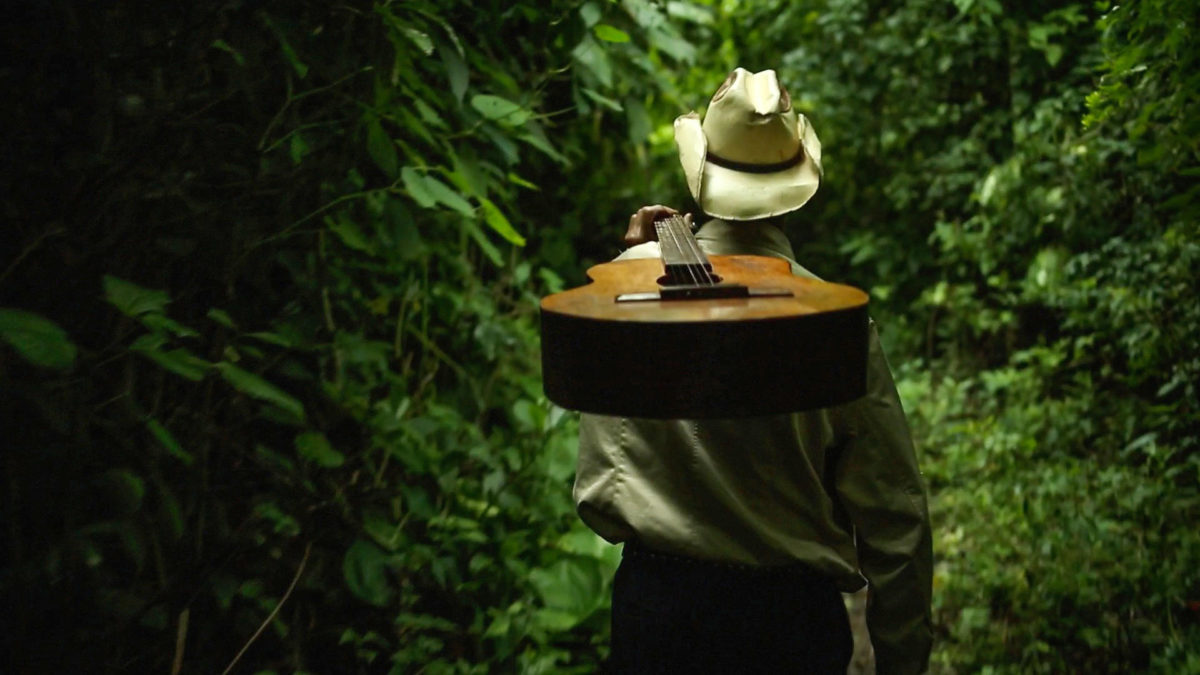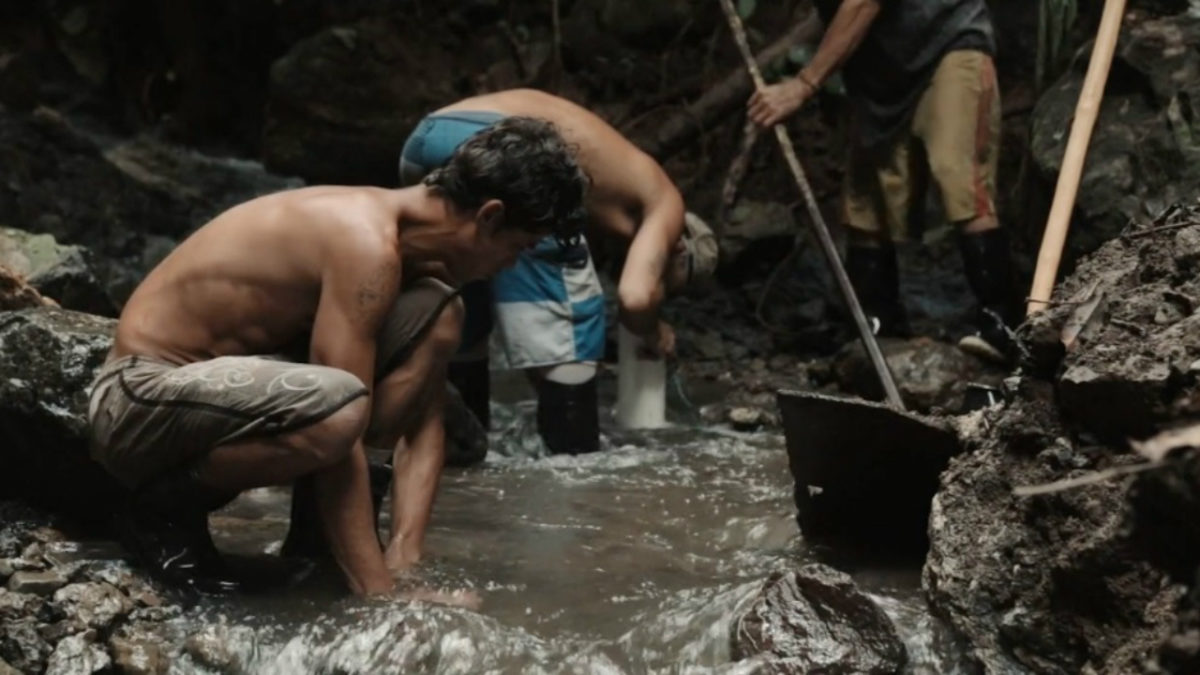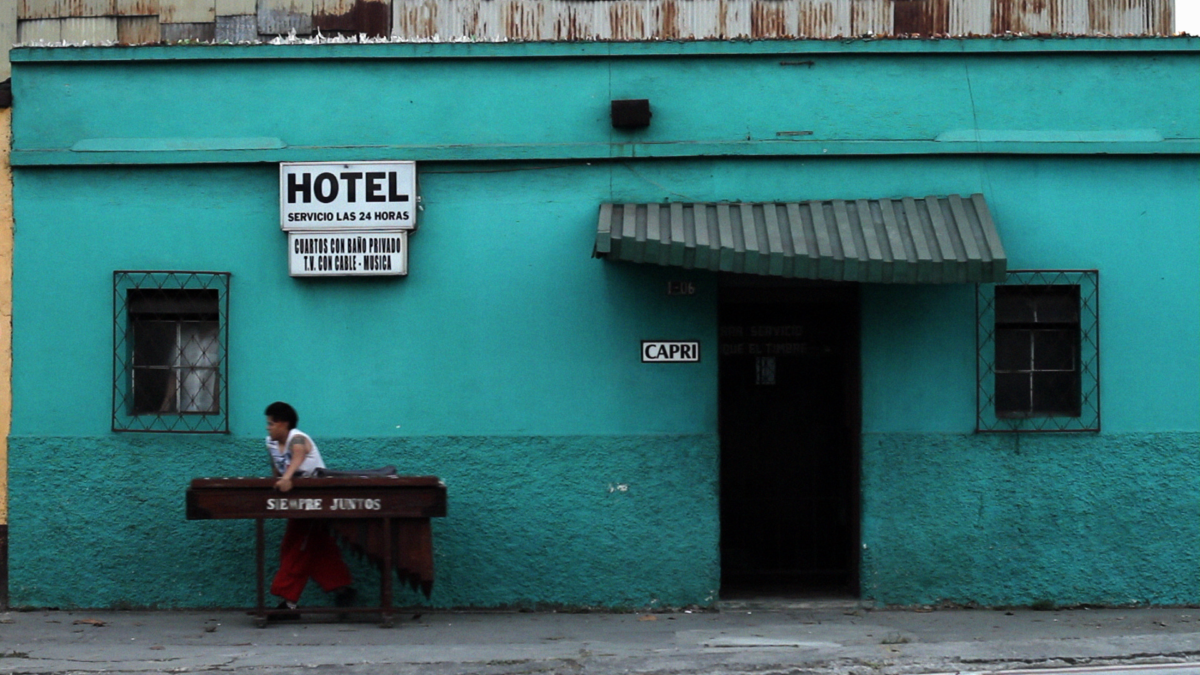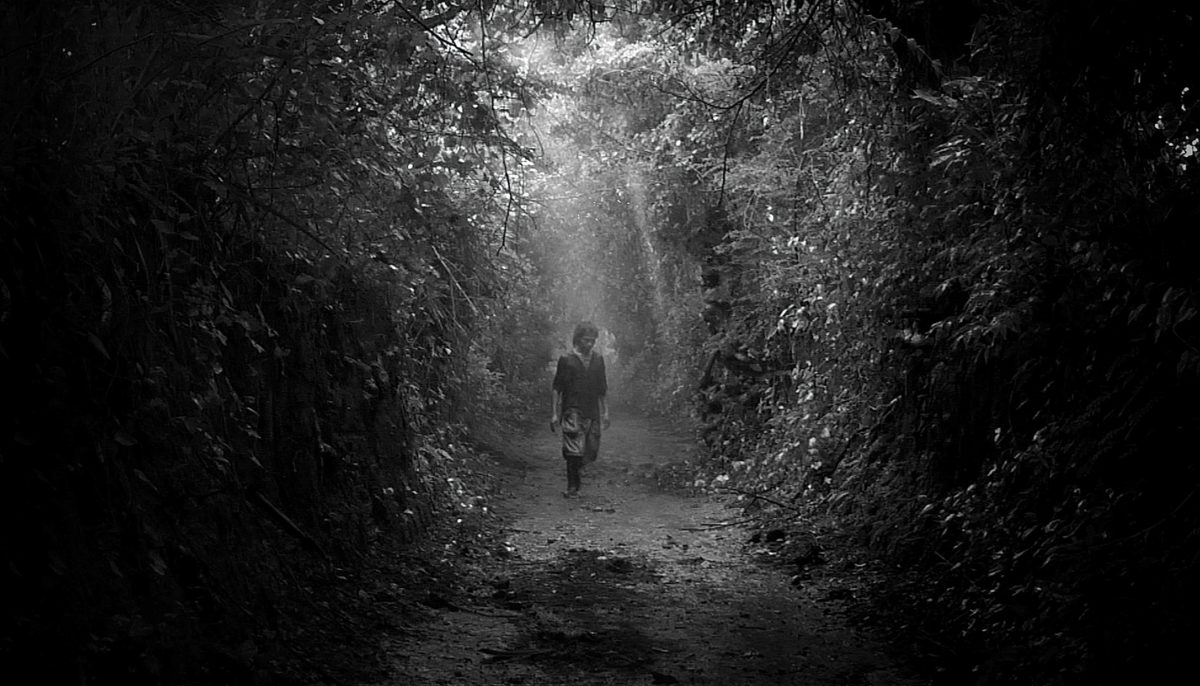Often when reading through history books, tragedy unfolds from behind a facade of objectivity. Under that veneer, the description of foreign lands as unwelcoming biomes emerges imbued with a denouncement of the Other. Anything beyond the narrow consensus of the “official story” is labeled as unnatural and shunned; bodies relegated to homogeneous icons of savagery, lawlessness and dissent.
Even if in the 21st Century the aforementioned perspectives are deemed archaic and colonialist—with their biases and limitations tirelessly dissected—some hurtful remnants are still present in every society traditionally pushed out of the geopolitical canon. After enduring centuries of systematic oppression, with archetypical depictions being presented as the status quo, the emancipation process is not as seamless as advertised. Trauma has been passed on from generation to generation, ever-present like a specter that never ceases to haunt the corner of the eye. Yet no two woes are the same, and after being brushed aside and told to hold their tears, this collection of souls learned to suffer in silence. Even when the primal urgency finally burst out as a scream, it was immediately muted and isolated as to suppress the correspondence with the multitude of other voices simultaneously burning with discontent. Once they were finally let out, they were left aimless; overwhelmed by doubt with no guidance as to where answers may be.
This characterization is vast and could easily fit many different cultural outliers all over the globe. All those communities that were promised a seat at the table by the idyllic prospect of globalization, but are still kept at a distance by the usual suspects; same as it ever was. In many ways, it’s the kind of condition that certain countries in Central America best exemplify with their cinematic traditions.
“To be” Central American is a concept foreign even to most who exist under its banner. The connective tissue between nations is thin because of a checkered history of adversities and shared misfortune. Borders might be as artificial as they are everywhere, yet crossing them in these small tropical nations feels substantial. Scenes immediately mutate, accents change completely and the distinct historical baggage is noticeable in every face met. Far from the nondescript broad strokes in which the region is depicted from the outside, its nuances are not just vivid, but fundamental. There’s no such thing as Central American identity, because to this day its open wounds still bleed uncertainty.
After being subject to military interventions and social uprisings, “official history” is generally taken with a grain of salt, suspect of inherent biases and the reproduction of a hierarchical discourse. As such, the arts have become the only known haven for dissenting narratives.

In terms of film, Central America is an outlier when compared to most other artistic eruptions coming from the margins of Western Society. Unlike the subversive tradition of Third Cinema in South America and West Africa, or the sustained production in the Middle East and Southeast Asia, the region is still taking its first steps. Institutional oddities and eccentric personal ventures have appeared sporadically throughout the 20th century, but to really speak about a “nascent cinema” for any of these countries, one has to begin with the new millennium.
Although the claws of neocolonialism were (and to a degree still are) very much present in the early 2000s, globalization did open some doors with its access to new technologies and the opportunities of gaining expertise abroad. As the Costa Rican film historians Patricia Fumero and María Lourdes Cortés explain in their 2018 article ‘A Gaze Towards Contemporary Central American Cinema’, all of a sudden a whole new generation of aspiring filmmakers had access to cheap digital cameras and pirated editing programs, and were just a flight away from Cuba’s prestigious Escuela Internacional de Cine y Televisión in San Antonio de Los Baños. There was no organized movement, nor manifesto to attach oneself to, just individual wills coinciding in the urge to seek answers through the moving image. Like the countries they came from, they were sharing a time and a space, yet not truly aware of what was happening elsewhere.
By this erratic rhythm movies began appearing. No matter if limitedly distributed even by the standards of the already marginal Latin American cinema, the isthmus was finally seeing itself and hearing its voices on screen; naturally, the question of what it actually meant quickly arose. The deep-rooted tradition of self-imposed estrangement is present even today, so doubts about which Central America is the one being portrayed and shipped as the regional ambassador to foreign onlookers are still central to the discussion. It’s not only a matter of nationality, as the sector’s diversity and heterogeneousness go well beyond established borders, applying also to differences in social class, political alignment, skin color, geography and even aesthetics. Getting some degree of international attention was a significant leap forward two decades ago, but as more and more “First World” festivals look towards these latitudes for potential programming, the bar has risen.
Still, there’s no definitive way to measure what’s currently happening in these tropical territories. The recent uptick in production comes as a series of processes that each one of these neighboring lands undertakes incongruously, on its own accord. Since the pamphleteer documentaries and guerrilla propaganda produced all over the region to fight off the nasty clutches of United States imperialism during the 1970s and 1980s, exalting sovereignty and embracing selfhood have been quite diffuse endeavors. Lately they’ve shifted towards self-reflection, taking cinema’s potential to shape memory as a compass in the process of forging identities.

The clear standouts have come recently from Guatemala and Costa Rica. The former includes household names in European film circles like Jayro Bustamante (Ixcanul, Tremors, La Llorona) and César Díaz (Our Mothers), and the latter is made up out of emerging filmmakers like Alexandra Latishev (Medea) and Sofía Quirós (Land of Ashes). In the last couple of years, they’ve shared the spotlight in prestige showcases at Berlin, Cannes, Venice and the Buenos Aires International Festival of Independent Cinema (BAFICI), making an effort to display the multiple ways in which these same surroundings can be framed.
The most common approach can be found in the historiographic exercise of shining light on social injustice and openly questioning the official narratives. The aforementioned tradition of politically active documentaries was born out of the Cold War during the 1970s, and was eventually cemented in the next decade by the works of institutions like Costa Rica’s Centro Costarricense de Producción Cinematográfica (CCPC), Panamá’s Grupo Experimental de Cine Universitario (GECU) and Nicaragua’s Instituto Nicaragüense de Cine (INCINE). The “socially aware film” became the region’s artistic stamp and the closest thing it’s had to an actual “wave”. Contemporary additions to this strand, like the latest regional pride, Caméra d’Or-winning Our Mothers, re-contextualize their dissatisfaction through fictional drama and a more polished mise-en-scène.
César Diaz’s film takes the riveting trial of Guatemala’s military officers who participated in the country’s Civil War and uses it as a background for its portrayal of a young forensic anthropologist’s search for his missing father. Like many features focusing on a topic of global human rights relevancy, dramatization is somewhat taken for granted and reduced to the weight of the themes explored, yet there’s real symbolic power in literally digging up historical neglect. Marcela Zamora’s The Room of Bones (2015) uses a similar narrative core, set in El Salvador, through the more traditional documentary exposé, while Antonio & Ernesto Jara Vargas’ The Devil’s Elbow (2014) opts to work with a film essay form, using archival footage for their imaginative retelling of the forgotten stories of banana enclaves and political prisoners in 1948’s Costa Rica. In the case of Invasión (2014) from Panamá’s Abner Benaim, its hybrid form evokes a collective sense of memory through the simultaneous use of testimonies and reenactments of the 1989 US invasion of the country’s capital. The methods and specific subject matter might differ from one another, but they are united by a guiding sense of film as a tangible record for preserving memory and giving a space to outlying voices; it seems intuitive for a part of the world where vestiges of the past are still being uncovered.
Another common path stems from the region’s ethnographic legacy. By far the best regarded strain in international art house circles, here the filmmakers focus on the minutiae of a particular social environment by making use of a contemplative tempo and observational framing, an aesthetic that corresponds with the substantial part of European cinema that opts for a more distanced style.
Jayro Bustamante’s Ixcanul (2015), winner of the Alfred Bauer Prize in Berlin and the Grand Prix of the Ghent International Film Festival, is the seminal example, as it manages to capture the landscapes (cultural and geographical) of Mayan Guatemala through the power of its economical use of descriptive images, while also engaging with an intimate narrative about an indigenous young woman’s hopes and dreams. In a similar vein, examples like Florence Jaugey’s La Yuma (2009) from Nicaragua and Antonella Sudasassi’s The Awakening of the Ants (2019) from Costa Rica go beyond their naturalistic profiles of lower-income peripheral existences, and imbue them with the emotional involvement of domestic dramas.

There are also more radical examples like Alvaro Torres slow-cinema portrait of gold panners in the Costa Rican jungle in We The Stones (2017), Sofía Quirós’ exploration of the mystical mundanity of said country’s Caribbean coast in Land of Ashes (2019), or Victor Ruano’s experimental odyssey to the spiritual transcendence sought by the people of Quelepa, El Salvador in El Puma de Quelepa (2017), whose sparse use of cinematic time permeates everyday life with a meditative tone that seems closer in spirit to Asian referents like the cinema of Wang Bing and Apichatpong Weerasethakul.
In all these cases, the moving image is used for the real-time examination of cultural idiosyncrasies. The goal here is not an illustration of a dialectical relationship with nationality, but something closer to an unfiltered record of a particular aspect of society. With theory pushed to the background, the nuances of each one of the experiences being portrayed come forward organically. The unobtrusive focus lets contrasting ideas and contradictory behaviors develop on screen, presenting the notion that perhaps the real implications of national identity lie in the palpable humanity of individual struggles.
This belief has materialized in the works of filmmakers exploring the troubled links between a collective cultural context and personal autonomy. A clear example comes from Alexandra Latishev’s Medea (2015), which lucidly frames the clash between a young, nonconforming woman seeking an abortion and a generally conservative society mired in double standards. It can also be found in most, if not all, of the films of Guatemalan director Julio Hernández Cordón (Buy Me A Gun; Marimbas From Hell; I Promise You Anarchy; etc.), in which the daily and carefree lives of outcasts and subcultures on the edge of society are usually presented with empathy and amusement in their resistance towards the status quo.

Whichever the approach taken, what all of these different trends signal is that a clear sense of place and local interest is still very present in Central America’s contemporary filmography. The very specific relationship of each country with its history clearly marks the conceptual and aesthetic through lines being developed, yet recurring concerns speak of a certain level of cultural correspondence, even if circumstantial.
Honduras, for example, led the way early on with the Third Cinema adjacent Calixto the Landlord (Sami Kafati, 2003), in many ways a radical film of justified revolt, and then switched to a more commercially-based quasi-industry of eclectic and erratic genre movies for internal consumption. And yet still out of nowhere a film like Olancho (Christopher Valdes & Theodore Griswold, 2017) can appear and fit seamlessly with the social awareness behind Guatemalan docufictions. In Nicaragua, something like Gloria Carrión’s Heiress of the Wind (2017) might seem like the kind of politically charged documentary to be expected to emerge from a country with such a conflicted history, but then it turns out to mirror some of the intimacy and personal storytelling associated with the film scene coming from the more peaceful outlier that Costa Rica sometimes is labeled as.
As seen in the current leanings of Central American film, preoccupations overlap and aesthetics collide in spite of what tradition indicates. The revolutionary dream of antithetical backgrounds embracing the same banner has surely faded away as the reigning political and economic structures teach to deal with concerns in insularity, and yet, something still draws them toward the same motifs. There is a shared adriftness. The methods of survival may very well vary, but it’s always the same endeavor: seeking some kind of meaning behind mutual scars, and finding something to hold on to as time heals them. Whatever that may be, the quest for it is what keeps Central America bound together.
